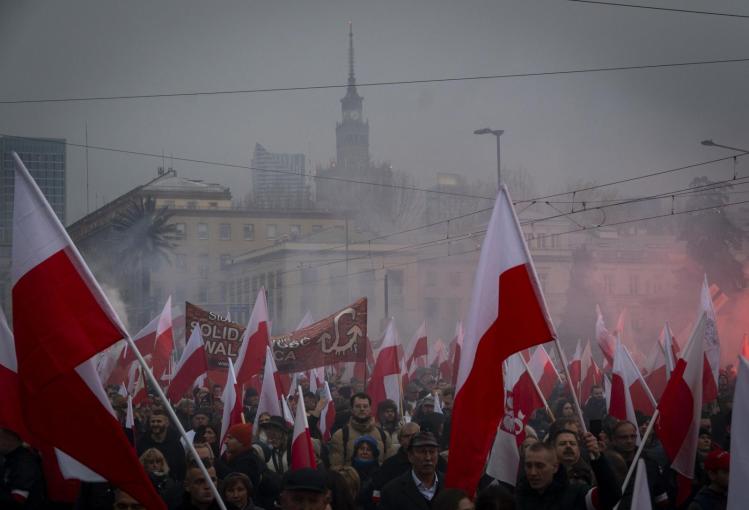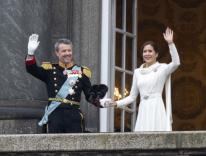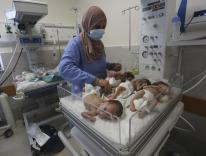
A week or so before I was due to travel to Warsaw, my text messages were filled with photos of Poland’s Independence Day. They had all the elements of your typical national celebration: streets dense with people, flags aloft over the heads of the crowd, and what appeared to be detonated smoke bombs tinting the dusk with chalky red and white, the colors of Poland’s flag. The photos recalled images I’d seen in the news from the rally on October 1, a gathering of nearly a million people just ahead of the elections that ousted the Law and Justice Party from power. While all the flags and colored smoke on November 11 commemorated Poland’s liberation from the Austro-Hungarian Empire in 1918 and the establishment of the modern Polish state, this year they also seemed to celebrate an important new epoch that began in 1989: a collective movement toward, and excitement about, liberal democracy. While authoritarianism seems to be cresting in other European countries, Poland at this moment appeared to show the potential for a kind of populism that wasn’t right wing.
The official reason for my visit to Poland at the end of November was a conference organized by the philosophy department of the University of Warsaw. One of the conference’s organizers, Dr. Mikolaj Sławkowski-Rode, a friend of mine from when I was a visiting student in Oxford ten years ago, now runs a fellowship program for postgraduate students from central and eastern Europe. There were presentations on various topics by the faculty at Warsaw—one on artificial intelligence and whether it can do satisfactory theology, another on evil as a “thick” moral concept. (My own presentation was on the lowly subject of publishing in magazines.) The University of Warsaw’s philosophy department is housed on the wide main street running through campus, which is lined with exquisite baroque buildings. Inside the building are dark wood staircases, long hallways, and seminar rooms with actual chalkboards. Next door is the Church of the Holy Cross, where Frédéric Chopin’s heart is interred.
Both the church and most of the university, established in 1816, are typical of the city’s monumental architecture. Warsaw was largely obliterated during the Second World War, so buildings in the city that look older than 1945 are often reconstructed copies of the original. The result can be uncanny: buildings that look old but are ever so slightly too pristine. Yet there is something poignant about Warsaw’s efforts to preserve and, when necessary, rebuild the symbols of its past glory. In the Old Town district, for example, the Sigismund’s Column, which honors the king who moved the Polish capital from Kraków to Warsaw, is such a point of pride that the ruined column on which the statue originally stood is displayed some two hundred feet from its replacement. So one is invited both to experience the place as though it were free from the pain of its past, and also to confront that pain as an experience of the city. Many such layers of Warsaw’s history are visible in its built environment. In the city’s commercial district, Centrum, looms Stalin’s Palace of Culture and Science, illuminated at night by impressive purple lights. In the lobby, there is a long line for the elevator to the top of the building. Underneath the city run tunnels that were used by Communist Party officials, though they’re now flooded and out of use. There is even a rumor of an underground train rail running all the way from the palace to Moscow.
I was staying in Warsaw’s Praga neighborhood, which until recently was considered derelict and dangerous, and at one point a taxi driver did take a moment to warn me about it. Yet despite this reputation, it appeared to be comfortably gentrifying into a place of laptop-friendly cafés, hip bars with live music, community arts spaces, and a local theater. My first day there, I’m not sure I saw a single person over the age of forty. Not only were the people in Praga young, they were cool. The barista at a café named after Kafka was seated playing chess with a friend. When I approached the unattended counter to order a coffee, he was not in a hurry to leave his match. On Saturday night, a nearby bar packed a crowd into its back room to sip draft beer and sway to a very good synth-pop band.
The first night of the conference, there was a dinner for attendees at the restaurant on the first floor of the Royal Castle, Café Zamek. On the menu: beef carpaccio, cream of crawfish soup, and guinea-fowl breast cooked in krupnik (a kind of liqueur) and butter, with grape leaves and potatoes. The decor was cozy old-world—white tablecloths with florid lacy detailing, elaborately framed mirrors, and a general sense of dainty, aristocratic visual clutter. Afterward, a small group of us headed over to a party in the apartment of a visiting professor (an American, who ended the night with a sing-along to John Denver songs on his acoustic guitar). There I had a conversation with a new acquaintance, Bartosz Wesół, an occasional contributor to Poland’s own lefty Catholic magazine, Więź. The tenor of our conversation had that special intensity reserved for parties, but when we met again a few days later at a café (also named after Kafka), his tone was thoughtful and calm. The arc of his journey to Warsaw would sound familiar to many college-educated Americans: His parents’ generation is more conservative than he is. After a modest suburban upbringing, he arrived in the metropolitan capital for a university education and an academic career. As with most people in Poland, he was raised Catholic. When I ask how his relationship to Catholicism had changed over the course of his life or even the past few months, he seemed slightly unsure how to approach what seems to him a non-issue. He is on board with the socially liberal agenda of Poland’s new coalition government, and he is a practicing Catholic. The relationship between his religion and his politics does not appear to trouble him.
On another night, I get a chance to talk to Mikolaj over beers at a New York–themed bar just a short walk from the tony Żoliborz neighborhood, where he lives in an apartment with his wife and young son. Mikolaj was born shortly after martial law was decreed in 1981, and lived his first eight years under Communism. He remembers his parents and their circle “living and breathing the elections” in 1989. In his view, the decades since 1989 have been an economic success, but everything else in Poland has been “a colossal letdown.” Like other Poles I’ve spoken with, he suggests that the usual American interpretation of the recently ousted Law and Justice Party is only partially true. Yes, they are very socially conservative, especially with regard to issues important to the Catholic Church, such as abortion. But their economic policies have been largely social-democratic: generous state support for working families and lots of regulation.
Liberal democracy in Poland can be traced back to the Constitution of May 3, 1791. Widely considered the first European constitution, it’s a rousing document, declaring that Poland will be a land of religious freedom (with limits: Catholicism would remain the official national religion, and apostasy—that is, conversion from Catholicism to another religion—would remain illegal). It also declared that anyone who immigrated into the Polish–Lithuanian Commonwealth was immediately a free person, able to enter into contracts or learn a trade. Of course, a lot has happened since 1791: wars, shifting borders, long periods of subjugation by neighboring states. But the vague assumption, still common in the United States and other parts of Europe, that liberal democracy in Poland only began to take root after the end of the Cold War is a mistaken one. It is also possible to overdramatize last year’s October rally and to overstate the effects of last year’s elections. Poland has not changed overnight. In any case, much of the take-to-the-streets public discontent seems to have dissipated. The only public protest I saw in November was one person with a portable speaker making a long speech about abortion in front of a few curious bystanders.
Like young Americans, young Poles are renegotiating their relationship to religious values as they relate to issues such as abortion. But to judge from the conversations I had in Warsaw, the aspect of Polish life that nearly all Poles seem to take for granted is Catholicism. Even those who welcome the new government’s socially liberal agenda do not think of it as a matter of Polish society abandoning its traditional religion. Abortion, the political issue most obviously related to Catholic morality, remains a top-tier concern, and the new prime minister, Donald Tusk, seems to be gingerly testing abortion-law reforms that would please liberal voters without putting off the large bloc of swing voters for whom opposition to abortion remains a central feature of Polish Catholic identity. But for the most part, what I found during my brief time in Poland were people whose political engagement seemed unencumbered by their religious affiliation. In this way, at least, Poland seems quite different from the United States, where political and religious polarization are so closely intertwined. What’s perplexing to an American visitor is that the attachment to Catholicism in Poland is so pervasive, and yet it does not seem to result in the kind of partisan zeal we associate with the Religious Right in the United States.
In fact, Polish Catholics still seem to take their faith quite seriously. On Sunday, both the 9:30 a.m. and 8 p.m. Masses were packed at St. Florian the Martyr in Praga. If you weren’t on time—by which I mean early—you had to stand in the aisles flanking the nave, along with a lot of other people. The Mass-goers were both young and old; there were families, single people, and couples. On the afternoon of Sunday, November 24, the cobblestone streets leading toward the Old Town were crowded by a procession for the Feast of Christ the King. Formally called the Solemnity of Our Lord Jesus Christ, King of the Universe, the feast was established in 1925 by Pope Pius XI as a day to stave off impending secularism by publicly celebrating Christ’s dominion over all people, nations, governments. A procession through the streets is part of the observance (you can still see it in some American cities, too). The one in Warsaw went on and on. Hanging above the heads of the processing crowd were pictures of Christ wearing a crown of thorns, and banners with the colors of the Polish flag. I stood there watching for some time, then moved on before the end was in sight.
Please email comments to [email protected] and join the conversation on our Facebook page.
Share
Previous Story
Life, as Pasolini Saw It
Next Story
Klimt's Exquisite Abundance

